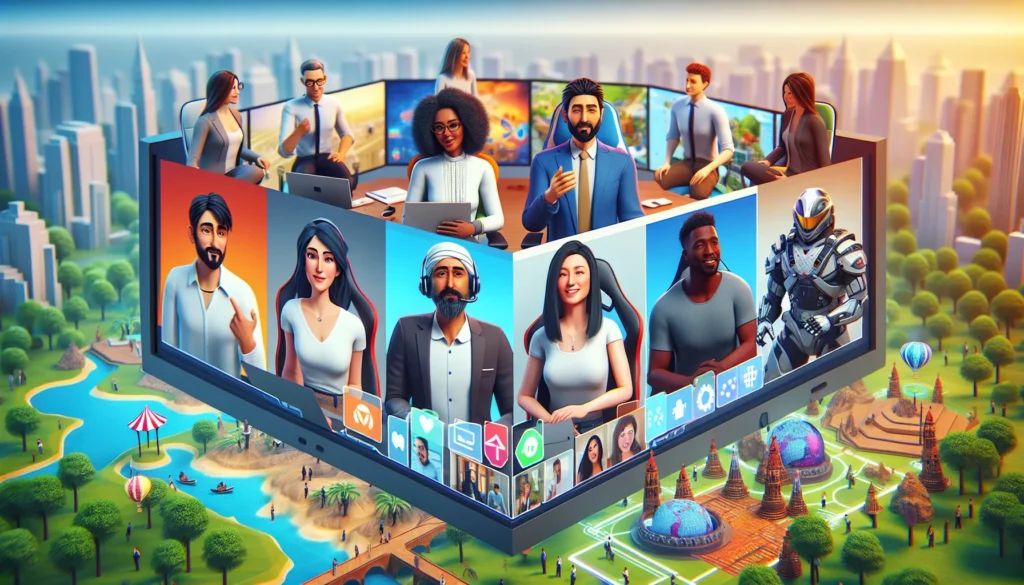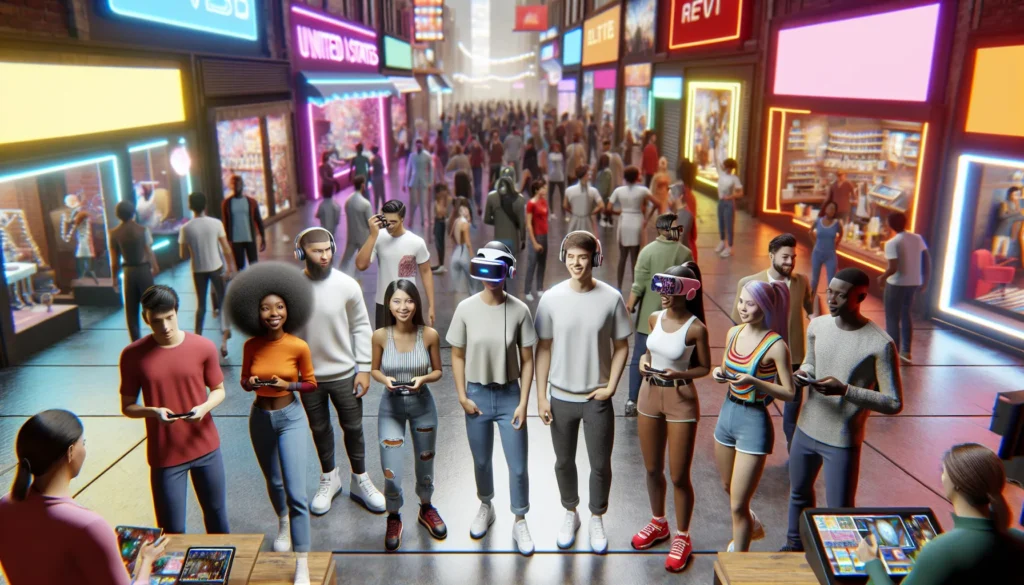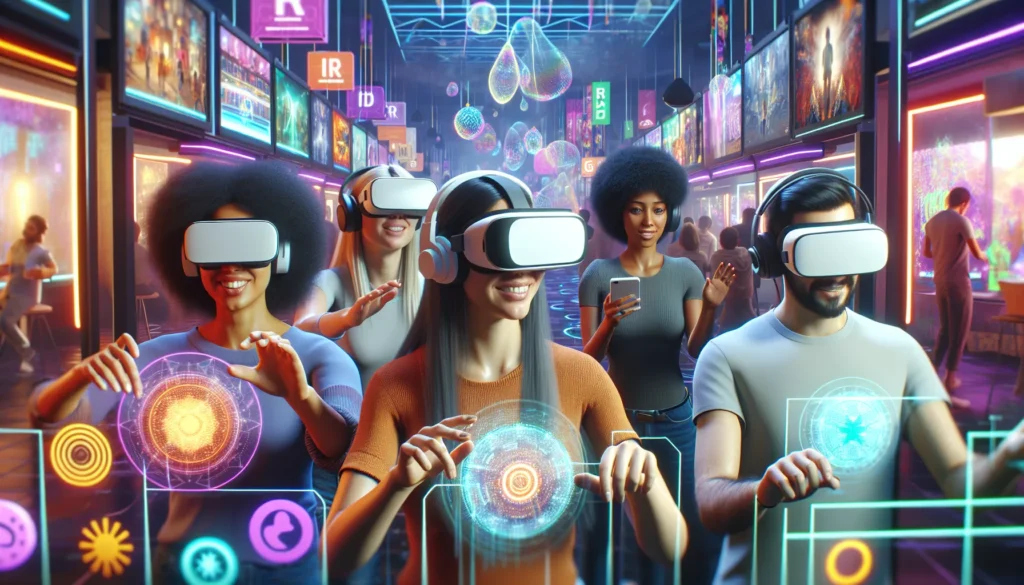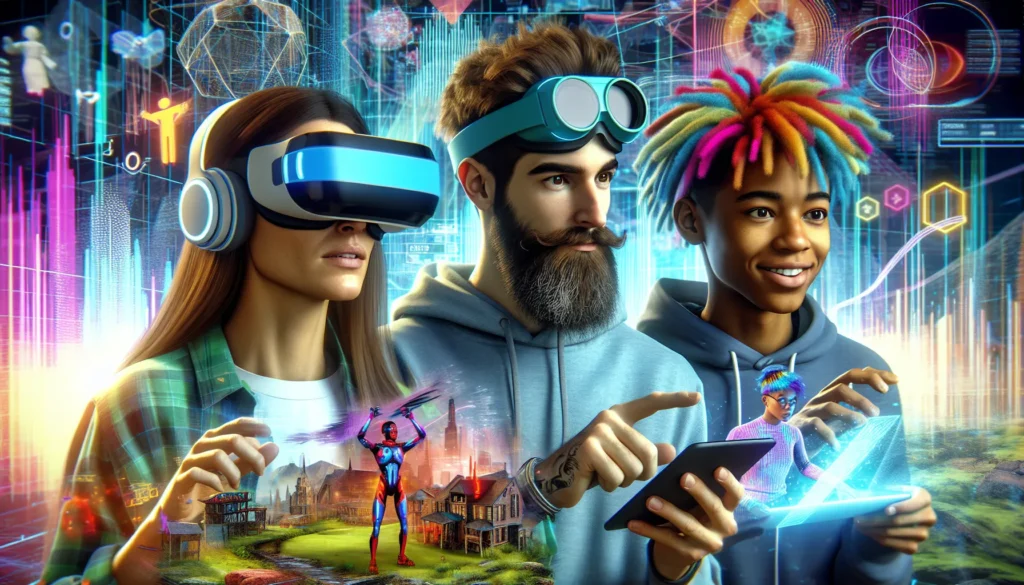Imagine a digital universe where your brand can connect with audiences in ways you never thought possible. That’s the metaverse—a virtual world blending augmented and virtual reality to create immersive experiences. As this futuristic space grows, it’s not just a tech trend; it’s a game-changing platform for businesses looking to innovate their marketing strategies.
You can’t afford to ignore the potential of the metaverse. It’s where customers are engaging, shopping, and building communities. Crafting a strong metaverse marketing strategy means tapping into this dynamic environment to create memorable, interactive experiences that resonate with your audience. Ready to take your brand into the future? Let’s dive in.
Understanding The Metaverse And Its Potential
The metaverse represents a persistent, interconnected virtual ecosystem where users interact through personalized avatars. It incorporates AR, VR, blockchain, IoT, and AI technologies to facilitate immersive experiences. Virtual real estate, gaming, social spaces, and digital economies form the core components of this digital realm.
This environment offers businesses opportunities to engage with users in innovative ways. You can create branded spaces, host virtual events, or sell NFTs to drive brand visibility. For example, platforms like Decentraland and Roblox enable companies to build interactive experiences and expand audience reach.
Metaverse adoption is growing rapidly. A Gartner report predicts that by 2026, 25% of people will spend at least one hour daily in the metaverse for work, entertainment, or shopping. If you incorporate this into your marketing strategy, recognize its potential to reshape customer interactions and loyalty.
Virtual economies within the metaverse also create new revenue streams. Gaming platforms with in-world currencies or augmented shopping spaces allow transactions using cryptocurrencies. Leveraging these economies increases brand accessibility in digital channels.
Key Components Of A Metaverse Marketing Strategy

A successful metaverse marketing strategy requires detailed planning and integration of digital tools. Focus on aligning your goals with the unique opportunities the metaverse provides.
Defining Your Target Audience
Understanding your audience is critical for meaningful interactions. Analyze demographic, behavioral, and psychographic data to segment users based on their digital preferences. Identify their interests in virtual spaces like gaming, digital collectibles, or social environments. Use insights from tools like Google Analytics and AI-driven platforms to refine segments.
Choosing The Right Platforms
Select metaverse platforms that align with your audience’s preferences. Platforms like Decentraland, Roblox, and The Sandbox cater to distinct user groups and industries. Consider platform reach, ease of content integration, and advertising opportunities. Check metrics like monthly active users (MAUs) and audience demographics for better decision-making.
Creating Immersive Experiences
Engage users with interactive content that encourages participation. Develop gamified campaigns, virtual stores, or brand-sponsored events. Use 3D assets, AR/VR, and AI to personalize experiences. Collaborate with metaverse creators to enhance authenticity, ensuring experiences feel natural to the platform’s environment.
Innovative Campaign Ideas In The Metaverse

Leverage the metaverse to craft dynamic campaigns that engage and immerse your audience. Use creative strategies to stand out in a competitive virtual landscape.
Gamified Advertising
Incorporate gamification into advertisements to create interactive and enjoyable brand experiences. For example, design branded mini-games within platforms like Roblox or Fortnite that allow users to earn virtual rewards or unlock exclusive content. Use challenges, leaderboards, and in-game achievements to encourage participation and boost shareability. Make your campaigns interactive by integrating AR filters or VR quests linked to your brand identity. This fosters deeper engagement while reinforcing key marketing messages.
Virtual Storefronts And Events
Build virtual storefronts to showcase your products in immersive 3D environments. Platforms like Decentraland and The Sandbox enable you to create branded spaces where users can browse, interact, and make purchases using cryptocurrencies. Enhance customer experiences by incorporating product customizations or virtual try-on features through AR.
Host virtual events such as product launches, concerts, or art exhibits to drive attendance and interaction. Partner with metaverse influencers or creators to amplify event visibility and attract larger audiences. Use custom avatars or branded digital collectibles (e.g., NFTs) as event giveaways to incentivize participation, creating added value for your attendees.
Measuring Success In Metaverse Marketing

Evaluating performance in the metaverse involves analyzing engagement, user feedback, and other actionable data. Metrics and insights help refine strategies and improve the effectiveness of campaigns.
Tracking Engagement Metrics
Track key engagement metrics to measure the impact of your campaigns. Monitor user participation in virtual events, time spent in immersive environments, and interactions with branded elements. Evaluate the number of avatars attending events, how many users explore virtual storefronts, or complete gamified challenges. Use platform analytics tools from environments like Roblox or Decentraland to collect accurate data on clicks, conversions, and reach.
Monitor your sales data and cryptocurrency transactions linked to your virtual spaces. For example, analyze the sale of NFTs, digital wearables, or in-game assets to assess the financial success of your efforts. Compare these figures with pre-established goals to identify strengths and opportunities for improvement.
Leveraging User Feedback
Analyze user feedback to gain insights into their experiences with your metaverse campaigns. Conduct post-event surveys or invite users to rate interactions with your virtual offerings. Focus on understanding whether customers found experiences engaging, intuitive, or valuable.
Monitor conversations on social platforms and metaverse communities to uncover organic feedback. Track mentions of your brand in digital channels to assess brand sentiment. If users highlight specific pain points or express desires for new features, adjust your strategies to enhance satisfaction and loyalty.
Challenges And Opportunities In Metaverse Marketing
Challenges in Metaverse Marketing
- Technological Complexity: Navigating advanced technologies like AR, VR, and blockchain is resource-intensive. Lack of expertise or infrastructure can hinder your ability to build immersive, interactive campaigns.
- High Development Costs: Creating engaging metaverse environments demands significant investment. For example, designing custom virtual spaces or 3D branded assets often requires specialized tools and skilled professionals.
- User Adoption Barriers: Engaging a broader audience may be challenging since the metaverse hasn’t yet achieved mass adoption. Limited access to required devices, such as VR headsets, could restrict your target market’s participation.
- Data Privacy Concerns: Collecting and storing user data in the metaverse raises unique privacy challenges. Adhering to global regulations like GDPR is essential to maintaining trust.
- Platform Fragmentation: Multiple platforms, such as The Sandbox and Decentraland, lack standardization. Choosing the right platform involves understanding user preferences and platform-specific capabilities.
- Brand Authenticity Risks: Users expect authentic, relevant experiences. Ineffective or overly commercial content could damage your brand perception.
Opportunities in Metaverse Marketing
- Immersive Brand Engagement: The metaverse allows you to deliver multisensory campaigns. For instance, you can create 3D virtual experiences where users interact with products in lifelike scenarios.
- Direct-To-Avatar (D2A) Sales: Virtual goods like branded skins and NFTs create new revenue streams. Popular games like Roblox already showcase the scalability of these offerings.
- Global Reach: A virtual presence enables immediate access to global markets. You can host worldwide events, simultaneously attracting users across various regions.
- Personalized Interactions: Data analytics empower you to tailor experiences based on user preferences. Real-time insights, such as interaction patterns, help you refine messaging and create targeted campaigns.
- Community Building: Offering engaging social spaces encourages user interaction. Virtual fan hubs or loyalty-based rewards systems foster deeper connections and long-term loyalty.
- Innovative Advertising Models: Augmented opportunities arise with programmatic ad placements in virtual billboards and gamified brand integrations. These methods align seamlessly with user activities for higher engagement.
Conclusion
The metaverse is redefining how you connect with your audience, offering endless opportunities to innovate and engage. By embracing this evolving digital space, you can position your brand at the forefront of immersive marketing.
Success in the metaverse requires creativity, strategic planning, and a willingness to adapt to new technologies. As this virtual ecosystem grows, it’s up to you to explore its potential and craft experiences that resonate with your audience on a deeper level.
Now is the time to take bold steps, experiment with interactive campaigns, and establish your presence in this transformative digital frontier.
Frequently Asked Questions
What is the metaverse?
The metaverse is a virtual ecosystem that blends augmented and virtual reality to create interconnected, immersive experiences. Users can interact, shop, and socialize within the space through avatars, making it a hub for businesses to engage audiences innovatively.
Why is the metaverse important for businesses?
The metaverse provides new opportunities to connect with customers through virtual events, branded spaces, NFTs, and gamified experiences. With more people spending time in virtual worlds, businesses can build stronger customer loyalty, expand their reach, and explore additional revenue streams.
How can brands market themselves in the metaverse?
Brands can leverage virtual storefronts, interactive ads, branded spaces, and NFT sales. Collaborating with metaverse creators and hosting events can help create engaging and memorable experiences that connect with their target audience.
What technologies power the metaverse?
The metaverse relies on a mix of AR, VR, blockchain, IoT, and AI technologies. These support immersive visual environments, secure transactions, and seamless integration for users and businesses alike.
How do businesses measure success in metaverse marketing?
Success can be tracked using engagement metrics like user participation, time spent in virtual spaces, user feedback, and sales or ROI from virtual products and experiences.
What challenges do businesses face in metaverse marketing?
Key challenges include high development costs, technological complexity, platform fragmentation, data privacy concerns, and ensuring brand authenticity in an evolving digital ecosystem.
What are direct-to-avatar sales?
Direct-to-avatar (D2A) sales involve selling digital products like clothing, accessories, or NFTs directly to users for their virtual avatars. This taps into emerging virtual economies within the metaverse.
How can businesses collaborate with metaverse creators?
Brands can partner with experienced metaverse developers, digital artists, and influencers to design engaging virtual spaces or digital products that align with their marketing goals.
Are virtual events effective in the metaverse?
Yes, virtual events are highly effective! They allow brands to engage with audiences in real time, foster interaction, and create memorable experiences that boost visibility and brand loyalty.
What is the potential of the metaverse by 2026?
A Gartner report predicts that by 2026, 25% of people will spend at least one hour daily in the metaverse, showcasing its immense potential for businesses to reshape customer interactions and expand their digital presence.

